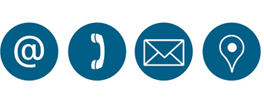Having bleeding kits in your business offers numerous benefits that enhance safety and preparedness. Here are some key advantages:
1. Immediate First Aid Response
Quick Access: Bleeding kits provide immediate supplies to address severe bleeding, which can be critical in emergencies.
2. Injury Mitigation
Reduced Severity: Prompt application of the right materials can help control bleeding, potentially saving lives and minimizing the severity of injuries.
3. Compliance with Regulations
Health and Safety Standards: Many workplaces are required to have first aid supplies. Bleeding kits help ensure compliance with occupational health regulations.
4. Employee Confidence and Morale
Safety Assurance: Knowing that effective first aid supplies are readily available can boost employee morale and confidence in workplace safety.
5. Training Opportunities
Skill Development: Having a bleeding kit can encourage training in first aid and emergency response, fostering a culture of safety among employees.
6. Risk Management
Liability Reduction: Preparedness can help mitigate risks and reduce potential liability in the event of an accident or injury.
7. Enhanced Reputation
Customer Trust: Businesses that prioritize safety are often viewed more favorably by clients and customers, improving overall reputation.
8. Emergency Preparedness
Comprehensive Safety Plan: Bleeding kits are an essential component of an overall emergency response plan, ensuring readiness for various incidents.
9. Community Responsibility
Support for Guests: Providing first aid resources shows responsibility not only for employees but also for guests and visitors.
10. Regular Maintenance
Ongoing Safety Culture: The need to regularly check and maintain the kits reinforces a culture of safety and preparedness within the organization.

1. AED Device
The main defibrillator unit, which is designed to analyze heart rhythms and deliver an electric shock if necessary.
2. Adult and Pediatric Pads
Electrodes that attach to the patient’s chest. Many AEDs come with both adult and pediatric pads, or pads that can be used for both.
3. User Instructions
Clear, step-by-step instructions for operating the AED, often available in multiple languages. Some cabinets also include visual guides.
4. CPR Mask
A barrier device to provide rescue breaths safely during CPR.
5. Gloves
Disposable latex or nitrile gloves to protect the responder during a medical emergency.
6. Scissors
For cutting clothing to access the chest if necessary.
7. Alcohol Wipes
For cleaning the area where the pads will be placed, ensuring good adhesion.
8. Emergency Contact Information
Instructions on who to contact for emergency services and internal emergency protocols.
9. Signage
Clear signs indicating the location of the cabinet and instructions for use, often featuring bright colors for visibility.
10. Battery and Maintenance Log
Some cabinets include a log to track the maintenance and checks of the AED, including battery replacement and pad expiration dates.
Considerations for Installation:
Accessibility: Ensure the cabinet is easily accessible to both staff and guests.
Visibility: Use bright colors and clear signage to mark the location of the AED cabinet.
Regular Checks: Implement a routine for checking the contents of the cabinet to ensure everything is stocked and functional
An Automated External Defibrillator (AED) can be a critical tool in saving a life during a cardiac emergency. Here’s how it works and why it’s so effective:
1. Understanding Cardiac Arrest
What Happens: Cardiac arrest occurs when the heart suddenly stops beating effectively, leading to a loss of blood flow to vital organs, including the brain.
Importance of Time: Brain damage can start within minutes without blood flow, making rapid response essential.
2. Immediate Action
Call for Help: In an emergency, the first step is to call emergency services (like 911) to ensure professional medical assistance is on the way.
Perform CPR: Begin CPR (cardiopulmonary resuscitation) immediately to keep blood flowing until an AED is available.
3. Using the AED
Quick Accessibility: An AED can be found in public places, workplaces, and many other locations, making it accessible when every second counts.
Step-by-Step Guidance: Most AEDs provide clear audio and visual instructions, making them user-friendly even for people with no medical training.
Heart Rhythm Analysis: The AED analyzes the heart's rhythm to determine if a shock is needed. If the rhythm is shockable, the device will advise the user to deliver a shock.
4. Defibrillation
Restoring Heart Rhythm: If a shock is advised, the AED delivers a controlled electric shock to the heart, which can help restore a normal rhythm.
Improving Survival Rates: Early defibrillation (within the first few minutes of cardiac arrest) significantly increases the chances of survival.
5. Post-Shock Care
Continued CPR: After delivering a shock, CPR should continue until emergency medical personnel arrive or the person shows signs of recovery (e.g., responsiveness, normal breathing).
Professional Help: Medical professionals will take over and provide advanced care.
6. Training and Awareness
Encouraging Preparedness: Training staff and the public on how to use AEDs can save lives. Familiarity with the device reduces hesitation during emergencies.
Conclusion
The rapid deployment of an AED in conjunction with CPR can dramatically increase the chances of survival for someone experiencing cardiac arrest. Having AEDs accessible in public spaces, workplaces, and community areas, along with trained individuals ready to use them, can be the difference between life and death. If you have more questions or need specific information about AEDs, feel free to ask!
.png)






